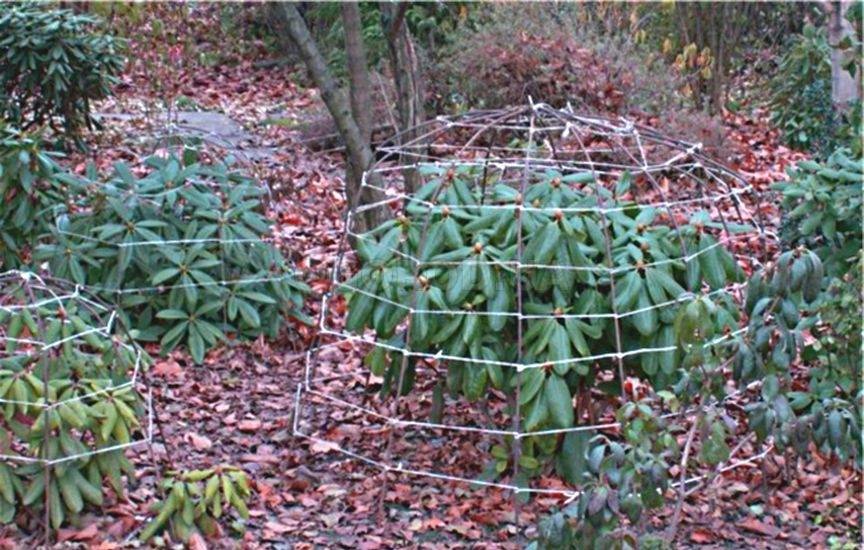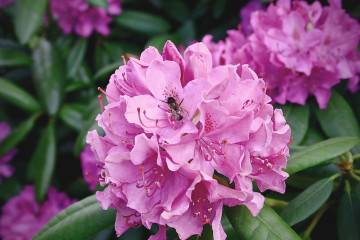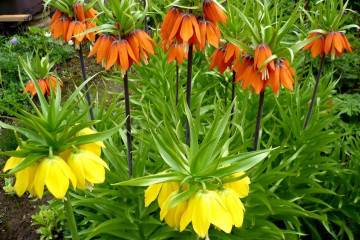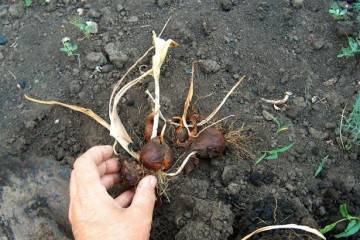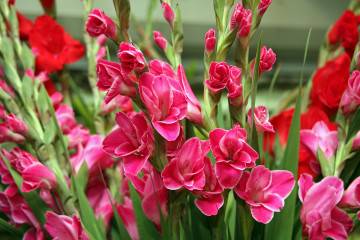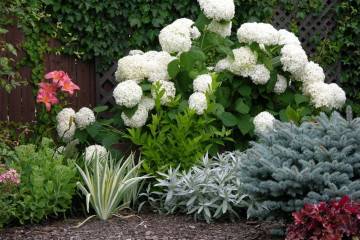How to feed rhododendron after flowering
Content:
Rhododendron is a beautifully flowering spring plant. It belongs to evergreens, blooms in May and June. To observe a beautiful bloom, you need to carefully care for the plant, follow the feeding schedule and choose the right place for planting. Rhododendron is unpretentious to weather conditions, but reacts sharply to the wrong composition of the soil.
When do you need additional feeding
If the plant blooms stably and looks healthy, feeding is carried out once a year with long-acting means and twice with targeted ones. A healthy rhododendron has dark green foliage and a large number of lush buds.
You can determine the nutritional deficiency of a plant by the pallor of the leaves and a small number of flowers. In such a case, the soil is analyzed for the acidity level and the amount of trace elements. Next, the necessary fertilizer is selected and applied.
Basic feeding rules
Rational feeding of rhododendrons has some features:
- young plants are fertilized only with liquid or diluted agents;
- during feeding, you should follow the instructions on the fertilizer package as closely as possible;
- it is forbidden to use fertilizers with lime or chlorine to feed rhododendron;
- Fertilizer for rhododendrons containing phosphorus is good for the plant, but too much can lead to chlorosis.
Fertilizers for rhododendron
There are two types of fertilizers for rhododendron: organic and mineral.
Organic
This type of fertilizer is designed to reduce the acidity level in the soil. If the soil is fertile and well-drained, then mineral fertilizers are optional. The best option would be organic matter and mulching the soil around the trunk of the plant.
The top layer should be 8 centimeters thick. The mulching technique allows you to create the necessary pH level of the soil, add all the necessary nutrients to it and exclude the germination of weeds.
In order to produce mulching, it is necessary to use soil from under healthy plants and trees. For example:
- pine needles;
- the bark of gymnosperms;
- grass, foliage, etc.
During decomposition, mulch brings all the nutrients into the soil and becomes a kind of acidifier. However, the effect of this procedure is short-lived. Mulching is recommended every 3 months.
When using manure with superphosphate, the soil is additionally checked for the acidity level.
Mineral
Mineral dressings are available on the market in a wide range. Their main advantages are ease of use and the ability to add specific nutrients to the soil. Usually in the composition of mineral fertilizers there are substances for soil oxidation. This greatly facilitates the gardener's work, since it eliminates the need to maintain a rational pH level in the soil.
According to experts, the most effective mineral fertilizers are:
- • fertilizing containing nitrogen;
- • iron chelate;
- • magnesium and ammonium.
The most favorable for azaleas (heather rhododendron) are substances such as potassium sulfate, magnesium and calcium. In addition to them, experienced gardeners use superphosphates, potassium nitrate and phosphorus. In addition, the use of a potassium or phosphorus solution can be an effective method of fertilization. In order to prepare it, it is necessary to dilute 8 grams of the substance in 10 liters of water. As for ready-made fertilizers of this type, the drug Kemira-M is well recommended on the market.
Fertilization chart
To obtain the fastest and most effective result from feeding, it is necessary to apply the fertilizer correctly. There are several important features:
• the granules are distributed over the outer third of the soil around the plant trunk (roughly - along the edge of the crown of the shrub);
• the granules are mixed with the soil and abundantly watered the fertilizer site;
• coffee cake is applied to the surface of the root zone with a depression of 4 centimeters.
If the plant has been mulched, then before feeding the mulch along the edges of the trunk circle is shifted by one third. Before fertilizing the plant, you should study not only how to feed it properly, but also how to water the rhododendron.
The first feeding of young shrubs
Holger Hachmann, a rhododendron breeder, believes that young shrubs should be fertilized in early spring next year, regardless of the planting season.
Caring for rhododendrons in the spring and feeding them is quite simple. If the plant has a height of about 30-60 centimeters, then long-acting preparations with a total weight of 40-60 g / m2 will be needed for fertilization.
Also, for an effective result of spring feeding of rhododendrons, you can add 30 g / m2. horny shavings. According to the method, the first feeding of rhododendron is similar to the first fertilization of a freshly planted hydrangea.
Second feeding
The next fertilization is done while the flowers are blooming. The period between the first and second feeding is usually no more than 1.5 months. Fertilize with Azophos, as it helps to strengthen the branches and support the plant during the budding period.
Third feeding
Novice gardeners often wonder how to feed a rhododendron after flowering. It is the third feeding that is carried out at the stage of withering of the buds. Feeding rhododendrons after flowering usually occurs in the middle of summer. In July, the rhododendron especially needs potassium and phosphorus, as the plant lays buds for flowering next year.
The most rational option is 20 grams of potassium and 20 grams of superphosphate. This is a mandatory feeding, which will give its results as early as next year.
Fourth feeding and preparation for winter
The first and main reason for the fourth feeding is to prepare the rhododendron for winter. This is necessary to increase the vigor level of the plant. In autumn, potash-phosphorus fertilizers are used, as well as water-charging irrigation. Before winter, the plant must be covered with coniferous needles.
Popular fertilizers
If the shrub is lonely, then solutions of mineral salts are suitable. In the case of mass planting, the following drugs are used:
- 20 grams of superphosphate;
- 20 grams of potassium sulfate;
- 40 grams of ammonium sulfate. In full, a mixture of these ingredients is applied under the plant if it reaches 1 meter in height.
The peculiarity of long-acting fertilizers is the constant and gradual feeding of the rhododendron.
Pokon
This fertilizer is most often used for feeding young shrubs. It is mixed with surface soil and watered abundantly.For 1 adult rhododendron bush, 30 grams of fertilizer is needed. The frequency of application is 1 time per season.
Agrecol
Depending on the size of the plant, this drug is used when planting in a volume of 10 to 50 grams. If an adult shrub is fertilized with the drug, then the agent is distributed under the bush and covered with soil. Next, the plant is watered abundantly. Fertilization frequency - 2 times a season with an interval of 3 months.
ASB-Greenworld
This drug is used for plants growing in acidic soil. ASB-Greenworld helps to stimulate growth, accelerate bud development, and brighten the color of the leaves. Fertilize rhododendron with this agent, according to the instructions, once every 3 months.
What happens if you stop fertilizing rhododendron
For the effective development of rhododendron, it needs a stable supply of nutrients in the soil. Their deficiency leads to wilting of the plant. It is necessary to clearly understand what exactly and when to fertilize rhododendrons. With a low level of soil acidity, the plant can get sick and soon die. That is why it is so important to follow the schedule and rules for feeding the bush.
Today, absolutely all gardeners are in solidarity in the opinion that the rhododendron needs constant feeding. Moreover, the more nutrients a shrub receives, the more resistant it will be to external negative influences.



